Ski: 2023-2024 DPS Kaizen 105, 184 cm
Test Location: Crested Butte Mountain Resort, CO
Days Skied: 8
Blister’s Measured Tip-to-Tail Length (straight-tape pull): 183.5 cm
Stated Weight per Ski: 1910 grams
Blister’s Measured Weight per Ski: 1867 & 1908 grams
Stated Dimensions: 135-105-119 mm
Blister’s Measured Dimensions: 135.4-105.2-119.1 mm
Stated Sidecut Radius (all lengths): 18 meters
Measured Tip & Tail Splay (ski decambered): 52 mm / 26 mm
Measured Traditional Camber Underfoot: 7 mm
Factory Recommended Mount Point: -9.7 cm from center; 82 cm from tail
Boots Used: Lange Shadow 115 LV W, Lange Shadow 130 LV, Tecnica Mach1 MV 130
Bindings Used: Tyrolia Attack 13
Available Lengths: 155, 163, 171, 179, 184, 189 cm
Blister’s Measured Tip-to-Tail Length (straight-tape pull): 178 cm
Stated Weight per Ski: 1800 grams
Blister’s Measured Weight per Ski: 1762 & 1830 grams
Stated Dimensions: 134-105-118 mm
Blister’s Measured Dimensions: 134-105-118.2 mm
Stated Sidecut Radius (all lengths): 18 meters
Measured Tip & Tail Splay (ski decambered): 49 mm / 22 mm
Measured Traditional Camber Underfoot: 6 mm
Core Materials: ash/poplar (horizontally laminated) + carbon fiber laminate
Base: sintered “World Cup race base”
Factory Recommended Mount Point: -10 cm from center; 79 cm from tail

Intro
DPS has tweaked their various ski collections many times over the years. That’s come in the forms of different shapes, rocker profiles, constructions, and more. Recently, they’ve offered fairly similar ski shapes in multiple different constructions. Their Pagoda Tour series contains their latest and most touring-friendly models; the Koala skis are heavier and more oriented toward freeride and freestyle skiing; and their new Kaizen series slots somewhere in the middle.
Introduced for the 2023-2024 season, the Kaizen skis span three models (Kaizen 100, 105, & 112) and are the latest evolution of the brand’s carbon-construction all-mountain offerings.
Over the past two seasons, we’ve been testing the middle child in the Kaizen family, the Kaizen 105. But before we get into our Full Review, here’s our Brand Lineup video with DPS from Blister Summit 2023, where we discuss all the background info and design details of their new skis. (And if you want to try new DPS skis for yourself, you can do so at Blister Summit 2024!)
What DPS says about the Kaizen 105
“Introducing the new Kaizen 105 – A confidence-inspiring ski for all abilities that allows for fun across the mountain, in all conditions. The single quiver ski is a big claim, but we think this one lives up to it.
Featuring a completely new shape, the Kaizen 105 takes inspiration from DPS’ classic RP and C2 chassis and blends these characteristics into a truly all-mountain freeride ski. Our aim was to make a ski that had a different style than our classic shapes that are in the Kaizen 100 and Kaizen 112. The 105 has a longer turn radius for larger sweeping turns, longer effective edge which gives better hold and stability in all snow conditions, and less rocker and tip taper which makes it feel more engaged with the snow at the tips and tails. This ski is fearless at high speeds and makes an awesome GS turn, but is nimble to make quick adjustments in trees and steep spots, and allows the skier to float whenever necessary.”
Construction
As discussed in our Brand Lineup video, above, the Kaizen series uses a new construction. Like the previous DPS Pagoda skis that the Kaizen series effectively replaces, the Kaizen skis’ wood cores feature horizontally laminated poplar and ash, along with a full carbon laminate. Here’s what DPS says about the Kaizen construction:
“The Kaizen core builds on the horizontal lamination concepts explored in our Pagoda skis, and layers the dense vibration absorbing ash in a new way and in a different location, using a new glue which has its own damping properties. The carbon fiber has been developed using methods from our Pagoda Tour line and is designed to optimize energy. With our damper core of ash and poplar, it’s a harmonious interaction that creates better skis now, and opens up exciting ideas for the future.”
Additionally, the Kaizen skis feature poured PU sidewalls that are the result of a collaboration with Checkerspot and its sister company, WNDR Alpine. The “Algal Wall” is 63% bio-based, thanks to PU that’s derived from algae, instead of petroleum. The other odds and ends include a sintered “World Cup Race Base,” Rockwell 48 steel edges, and a textured polyamide top sheet.
The Kaizen skis are made in the DPS factory in Salt Lake City, Utah, and come with the brand’s lifetime warranty (see the DPS site for all warranty details). It’s also worth highlighting the DPS “Revive” program, which allows you to trade in your old DPS skis for a credit toward a new pair on the DPS website, or you can shop their trade-in inventory.
Shape & Rocker Profile
The Kaizen 105 shares several things in common with previous DPS models, particularly when it comes to its tip and tail taper, and its tip and tail rocker. Compared to the ~105mm-wide all-mountain market, the Kaizen 105’s tips and tails are on the more tapered end of the spectrum, and it also has fairly deep rocker lines.
However, as DPS notes, the Kaizen 105 doesn’t feature as much tip or tail taper or as much tip rocker as the Kaizen 100 and Kaizen 112. In the older DPS naming scheme, the Kaizen 100 and Kaizen 112 would fall into the “RP” category, whereas the Kaizen 105 is a blend between those skis and the less tapered, less rockered “C2” shapes.
Flex Pattern
Here’s how we’d characterize the flex pattern of the 179 cm Kaizen 105:
Tips: 8
Shovels: 8-8.5
In Front of Toe Piece: 9-10
Underfoot: 10
Behind the Heel Piece: 10-9
Tails: 9
And here’s how we’d characterize the flex pattern of the 184 cm Kaizen 105:
Tips: 8
Shovels: 8-8.5
In Front of Toe Piece: 9-10
Underfoot: 10
Behind the Heel Piece: 10-8.5
Tails: 8.5
Overall, the Kaizen 105 is a strong ski. However, this is a notable point of differentiation between it and the previous DPS Pagoda and Alchemist skis we’ve tested. Many of those skis were even stiffer, particularly at the tips and tails. The Kaizen 105’s tips and tails are not super soft by any stretch, but they are easier to flex than many of the models in the previous DPS all-mountain collections.
Sidecut Radius
The Kaizen 105’s stated sidecut radius stands at 18 meters across all lengths. For its class, that’s fairly average, if not a bit shorter than average, but it’s longer than the notably tight radii of the Kaizen 100 and Kaizen 112, which is 15 meters.
Mount Point
We measured the Kaizen 105’s recommended mount point at about -10 cm from true center, which is pretty standard for a directional ski and notably farther back than freestyle-friendly shapes like the DPS Koala models.
Weight
DPS skis have historically sat on the lighter end of the spectrum, with a few exceptions (most notably, their Koala skis). The Kaizen 105 continues this trend: the 179 cm Kaizen 105 weighed about 1800 grams per ski on our scale, while the 184 cm length is about 1890 grams per ski.
Those weights make the Kaizen 105 pretty light for a ~105mm-wide all-mountain ski, but if you look at more touring-specific models around the same width, the Kaizen 105 is a bit heavier. I.e., it falls somewhere between resort-specific and touring-specific skis when it comes to weight.
For reference, here are a number of our measured weights (per ski in grams) for some notable skis. Keep in mind the length differences to try to keep things apples-to-apples.
1442 & 1474 Armada Locator 104, 178 cm
1707 & 1719 Nordica Santa Ana Unlimited 104, 179 cm
1761 & 1778 ZAG Slap 104, 176 cm
1762 & 1830 DPS Kaizen 105, 179 cm
1781 & 1795 Atomic Maverick 100 Ti, 180 cm
1800 & 1824 Romp Zorro 100, 183 cm
1792 & 1792 Nordica Santa Ana 104 Free, 172 cm
1805 & 1833 Liberty Origin 101, 182 cm
1807 & 1849 Peak 104 by Dav, 184 cm
1816 & 1819 Head Kore 99, 184 cm
1836 & 1838 Armada ARW 106 UL, 180 cm
1867 & 1908 DPS Kaizen 105, 184 cm
1869 & 1873 Line Sakana, 181 cm
1884 & 1894 Folsom Cash 106, 176 cm
1901 & 1902 Renoun Endurance 98, 184 cm
1908 & 1930 Peak 104 by Bode, 178 cm
1946 & 1962 Black Crows Atris, 184 cm
1951 & 1953 Elan Ripstick 106, 188 cm
1951 & 1957 RMU Apostle 106, 184 cm
1956 & 1976 Blizzard Rustler 10, 186 cm
1961 & 1985 Mindbender 106C W, 176 cm
1975 & 2028 Armada Declivity 102 Ti, 180 cm
1989 & 2000 Folsom Cash 106, 188 cm
1990 & 2045 Peak 104 by Bode, 184 cm
1997 & 2001 RMU Apostle 106 Pro, 184 cm
1997 & 2001 ZAG Slap 104, 188 cm
2009 & 2010 Rossignol Sender 104 Ti, 186 cm
2019 & 2024 Salomon Stance 102, 183 cm
2034 & 2060 Peak 98 by Bode, 184 cm
2042 & 2062 Dynastar M-Pro 99, 186 cm
2050 & 2084 K2 Mindbender 106C, 183 cm
2057 & 2061 Fischer Ranger 102, 183 cm
2068 & 2178 Salomon QST 106, 181 cm
2079 & 2089 Shaggy’s Mohawk 98, 186 cm
2085 & 2120 K2 Mindbender 99Ti, 184 cm
2112 & 2149 J Skis Masterblaster, 181 cm
2118 & 2194 K2 Mindbender 106C, 189 cm
2138 & 2172 Rossignol Sender 106 Ti+, 187 cm
2166 & 2237 Volkl Mantra 102, 184 cm
2202 & 2209 Shaggy’s Ahmeek 105, 186 cm
2233 & 2255 Nordica Enforcer 104 Free, 186 cm
2230 & 2290 Line Blade Optic 104, 185 cm
2295 & 2344 J Skis Hotshot, 183 cm
2326 & 2336 Nordica Enforcer 100, 186 cm
Now, let’s get to how all that adds up on snow:
FULL REVIEW
We first got on the new Kaizen 105 back at Blister Summit 2023, where DPS brought them for attendees and reviewers alike to test. Since then, we’ve been skiing the 179 cm and 184 cm versions at Crested Butte Mountain Resort across a wide range of conditions. Time to weigh in.
Moguls, Trees, & Tight Terrain
Kara Williard (5’9”, 170 lbs / 175 cm, 77 kg): Moguls and other sorts of tight terrain are probably where I found myself most enjoying the Kaizen 105, and this was true even when the moguls were huge and the snow was quite firm. Overall, the Kaizen 105 is a nimble and maneuverable ski. Whether it was early season obstacles or narrowly spaced bumps, I found the ski accessible and easy to turn.
I wouldn’t say the Kaizen 105 is the most lively nor the most damp and stable ski, but it definitely stands out for its maneuverability. I think it’ll work best for skiers who tend to ski with either a fairly conservative and precise style or who take a more dynamic, light-on-their-feet approach in tight terrain. And I’d still say it feels surprisingly stable for how light it is.
The upside to that aspect of the Kaizen 105 is a low swing weight, which adds to its accessibility in technical terrain. The Kaizen 105 does feel pretty stiff through the tail, but I didn’t find it to be particularly punishing when I did get off balance or knocked in the backseat.
Luke Koppa (5’8”, 155 Ibs / 173 cm, 70 kg): Agreed. The Kaizen 105 is a notably maneuverable and agile ski and those traits can be a big plus when navigating tight and technical terrain like moguls and trees.
I’ll reiterate that this ski has a notably low swing weight — it doesn’t require much physical effort to flick side-to-side. It’s also pretty easy when it comes to releasing its tail, pivoting the ski, and making other sorts of non-carved turns. You’ll want to stay centered or put some pressure on its shovels to do so (i.e., not be super backseat), but the Kaizen 105 is by no means some really “locked-in” ski that requires tons of effort or perfect technique to slash and slide when needed.
As for its flex pattern, the Kaizen 105 feels a bit more forgiving / less quick to punish backseat skiing than some DPS skis of the past (e.g., Alchemist Wailer 106 C2). Many of those skis felt stiffer at the tips and tails than the Kaizen 105, and while it isn’t particularly soft in those areas, the Kaizen 105 has a bit more “give” to it. That makes it feel more forgiving when your form isn’t ideal. At the same time, I don’t think I ever found myself feeling like I needed more support from the 184 cm Kaizen 105’s tips or tails (see the “Length” section for more on that).
It wouldn’t be my top pick for those who frequently find themselves in the backseat and want a really forgiving, easygoing ski, but I think many skiers could get along with the Kaizen 105 when navigating trees and bumps.
Powder & Soft Chop
Kara: Luke and I have had different experiences on the Kaizen 105, given that I’ve mostly skied it on firm days, whereas he took it out on some of our softer days early this season. The softest conditions I got it in were fairly skied out after a pretty small storm, but I found the Kaizen 105 to float pretty well for its size. Its aforementioned maneuverability was also an asset in these conditions.
Given that it’s on the lighter end of the spectrum, it does get knocked around a bit in more challenging conditions, especially when skiing fast through chop, but it was more composed than I expected. E.g., it felt a bit smoother and more stable than even slightly heavier skis, such as the 176 cm K2 Mindbender 106C W.
Luke: The Kaizen 105 is a lot of fun in all sorts of soft snow. Everything we just discussed regarding its maneuverability applies in soft snow — to an even greater degree. Its tapered tips and tails and fairly deep rocker lines keep it feeling loose and surfy in fresh and cut-up pow.
In terms of flotation, I’d say it’s a bit above average for its width. Like most ~105mm-wide skis, the Kaizen 105 isn’t ideal for trying to wiggle small turns at slow speeds in deep snow on lower-angle slopes. But give it some pitch, and it does a very respectable job of planing up and avoiding tip dive, especially if you ski it fairly centered.
Once the new snow gets skied out a bit, the Kaizen 105 doesn’t encourage very high speeds, but as Kara noted, it is pretty stable in these conditions for its weight. In low-density chop (e.g., light fresh snow that’s had a few skiers go through it), I can still ski the Kaizen 105 quite hard and fast, thanks to its supportive and fairly buoyant shovels. As the snow gets more consolidated, I’m more inclined to take advantage of its agility and surfy ride, making more frequent, smaller turns to keep speed in check, but also staying on the lookout for little mounds to jump off or slash.
Firm Chop & Crud
Kara: The best attributes the Kaizen 105 has to offer in firm chop and crud are its maneuverability and pretty accessible ride, making it a great ski to ski with finesse through conditions that are less than ideal.
Given its low weight, it makes sense that the Kaizen 105 isn’t an exceptionally damp or stable ski. If those are your top priorities, it’s probably going to make sense to go with a (much) heavier ski. Similar to my notes about it in soft chop, though, the Kaizen 105 was more composed in crud than I expected.
Luke: Agreed once again, and I’d highlight Kara’s first line. The Kaizen 105 doesn’t stand out for having a really smooth, planted ride quality or unflappable composure when skiing fast in rough conditions. Rather, it’s a nimble and maneuverable ski that makes it pretty easy to navigate these conditions in a slower and more controlled manner.
I do think the Kaizen 105’s suspension is impressive for how little it weighs. I spent several very firm days on it and very rarely found myself thinking it felt so harsh in cruddy conditions that I wanted to switch to something else (something I have thought about other skis of similar weights). DPS has been experimenting with lightweight ski builds and various forms of carbon-fiber laminates for decades now, and it seems that each version of their all-mountain construction (Alchemist, Pagoda, & now Kaizen) that I test seems to have a slightly better suspension-to-weight ratio.
Groomers / On-Piste
Kara: Unlike Luke, prior to skiing the Kaizen 105, I didn’t have much time on other DPS skis, and I hadn’t skied the predecessor Pagoda series. Before even skiing it, my first impression of the 179 cm Kaizen 105 was that it felt notably lightweight, and I wasn’t sure how this was going to translate to firmer days and on-piste skiing.
Thankfully, I found myself pleasantly surprised by the Kaizen 105 during our December dry spell. Now, this isn’t some remarkable carving ski by any means. It doesn’t feel super precise overall, and its fairly stiff flex pattern requires some effort / force to bend and dig in its edges.
That said, the Kaizen 105 does feel pretty damp and stable on piste for its weight, and it also doesn’t require that you’re constantly focusing on carving it on edge in order to feel intuitive and comfortable on piste. I.e., it’s happy to skid and slarve turns if the snow is firm and you don’t feel inclined to push your luck via high-edge-angle carves.
If carving performance is a high priority for you, you’ve got better options in this class. But if you’re willing to compromise a bit in that direction in exchange for off-piste maneuverability, the Kaizen 105 would be a reasonable choice.
Luke: On fairly soft groomers, I had a good time carving the Kaizen 105. On firmer ones, where I’d think twice about trying to carve really hard on most ~105mm-wide all-mountain skis, I’d typically opt for more casual, low-edge-angle skids.
Most of this came down to turn initiation. The Kaizen 105’s shovels do feel easier to bend than many of the previous DPS Pagoda and Alchemist skis I’ve tried, but the Kaizen 105’s shovels are still pretty rockered and tapered. As a result, turn initiation is not as quick or easy on the Kaizen 105, relative to a minimally tapered, minimally rockered ski (e.g., Elan Ripstick 106).
Still, on groomers where it was fairly easy to get an edge in, I could happily make a variety of turn shapes on the Kaizen 105, from tight, high-edge-angle GS turns to longer, higher-speed Super-G ones. And while it’s not exceptionally energetic, when I did really focus on bending it, the Kaizen 105 produced some appreciable pop at the end of the turn.
Length
Kara (5’9”, 170 lbs / 175 cm, 77 kg): I generally prefer skis somewhere in the range of 170–184 cm, depending on the particular model. The 179 cm Kaizen 105 that I’ve been testing is on the longer side of that spectrum, but given that the standout trait of this ski has been its excellent maneuverability, it worked well for me. I haven’t skied the 171 cm Kaizen 105, but because of how quick and maneuverable the 179 cm version is, it feels pretty safe to say that the 171 cm would likely feel too short to me.
Luke (5’8”, 155 Ibs / 173 cm, 70 kg): I typically get along well with skis in this ~105mm-wide all-mountain category that range from roughly 180 cm to 188 cm. Given that, it came as little surprise that the 184 cm Kaizen 105 felt like a pretty ideal length for me. I’m definitely not tempted to size down. I might opt for the 189 cm length if I primarily skied open terrain with few tight moguls / trees, but I’d probably still stick with the 184 in order to maximize the ski’s strong points (maneuverability & quickness) and not attempt to turn it into something it’s not (a super damp and stable ski).
If you’re really split between lengths, I’d probably go with the longer one, but you can check out our Gear 101 article and video on ski length for more thoughts on that. Or, you can always become a BLISTER+ member, send us a note via the Member Clubhouse, and one of our reviewers will work one-on-one with you to make sure you end up with the right product.
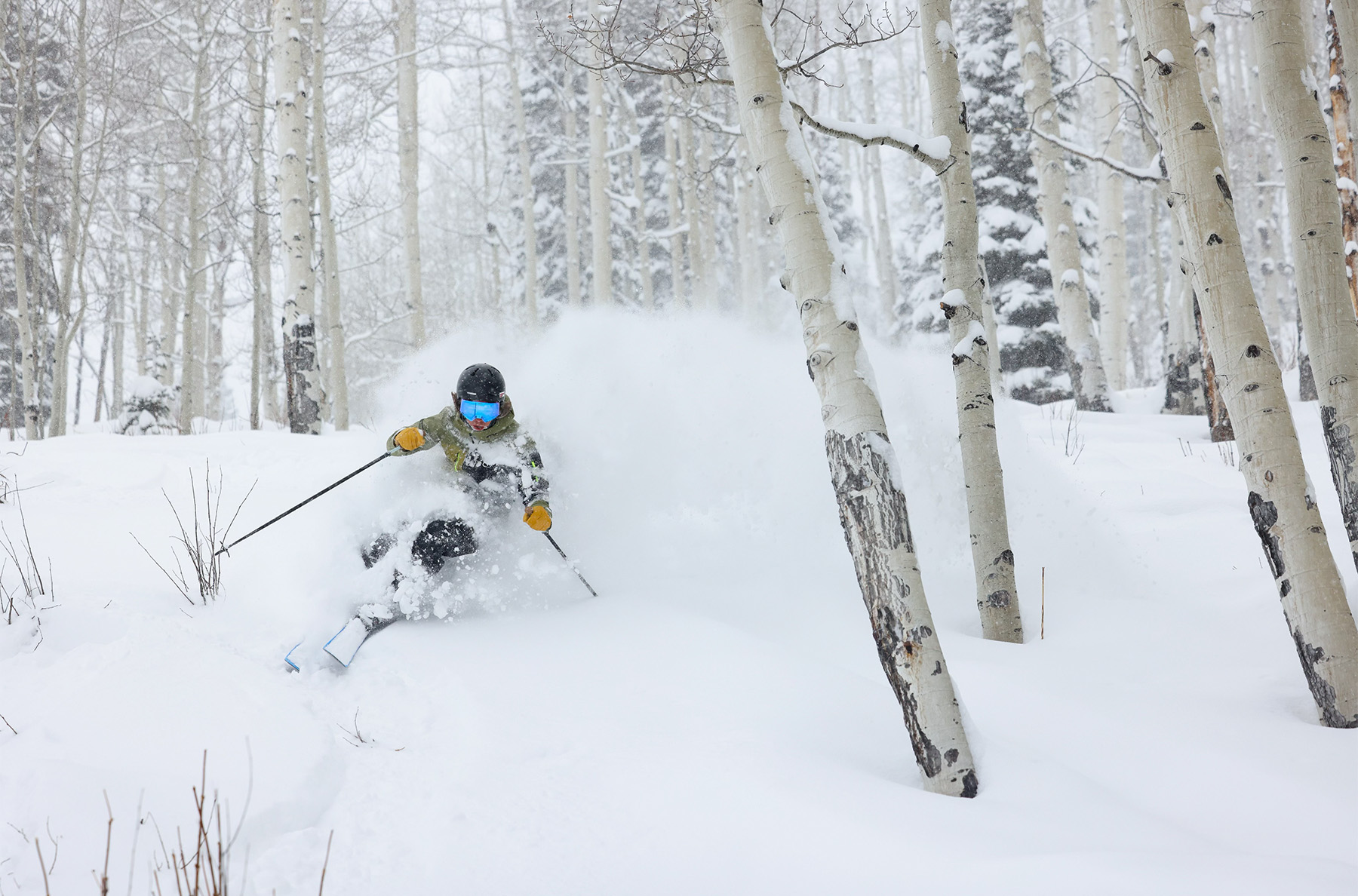
Who’s It For?
Kara: The Kaizen 105 is a pretty versatile all-mountain ski that’s well suited for those who prioritize maneuverability. That said, it’s still pretty stable and capable in a variety of conditions, provided your preferred approach leans more toward higher-frequency and lower-speed turns (particularly in firmer and rougher conditions), rather than charging straight down the fall line.
Given its weight, the Kaizen 105 also makes plenty of sense as a 50/50 (resort / backcountry) or dedicated backcountry ski, especially if you want something that floats pretty well in soft snow but that’s also heavy and maneuverable enough to easily handle more variable backcountry conditions.
Luke: Yep, not a whole lot to add here. The Kaizen 105 feels practical in most conditions and terrain, provided you prefer a more maneuverable and agile ski, not a very planted, precise, and stable one. The Kaizen 105’s rearward mount point and generally directional design make it best suited to, well, directional skiers. However, it’s more adaptable in terms of stance than many previous directional skis from DPS; you definitely don’t need to be driving it with a super forward stance 100% of the time. That said, if you know you prefer playful, freestyle-friendly skis, the DPS Koala series is probably a better fit.
Bottom Line
The DPS Kaizen 105 is a refined evolution of DPS’s long line of lightweight all-mountain skis. It maintains many of those skis’ signature traits — notably, their surfy rides and low swing weights — while also feeling a bit more accessible from a flex-pattern perspective. And it does all that while at least matching, or potentially improving suspension and stability in less ideal conditions.
Deep Dive Comparisons
BLISTER+ members and those who purchase our Digital Access Pass can check out our Deep Dive comparisons linked below. Get our Digital Access Pass to view all our Deep Dives and Flash Reviews, or become a BLISTER+ member today to get access to that and a LOT more, including the best worldwide Outdoor Injury Insurance, exclusive deals and discounts on skis, personalized gear recommendations from us, and much more.
Check out our Deep Dive comparisons of the DPS Kaizen 105 to see how it compares to the DPS Pagoda 106 C2, DPS Koala 103, Peak 104 by Bode, Peak 104 by Dav, Salomon Stance 102, Rossignol Sender 104 Ti, Fischer Ranger 102, Armada Declivity 102 Ti, ZAG Slap 104, Salomon QST 106, RMU Apostle 106, K2 Mindbender 106C, Wagner Summit 106, Volkl Blaze 106, Volkl Mantra 102, WNDR Alpine Intention 108 (Cambered), HEAD Kore 105, Shaggy’s Ahmeek 105, Elan Ripstick 106, J Skis Hotshot, Blizzard Rustler 10, Black Crows Atris, Line Blade Optic 104, & Nordica Santa Ana 104 Free.



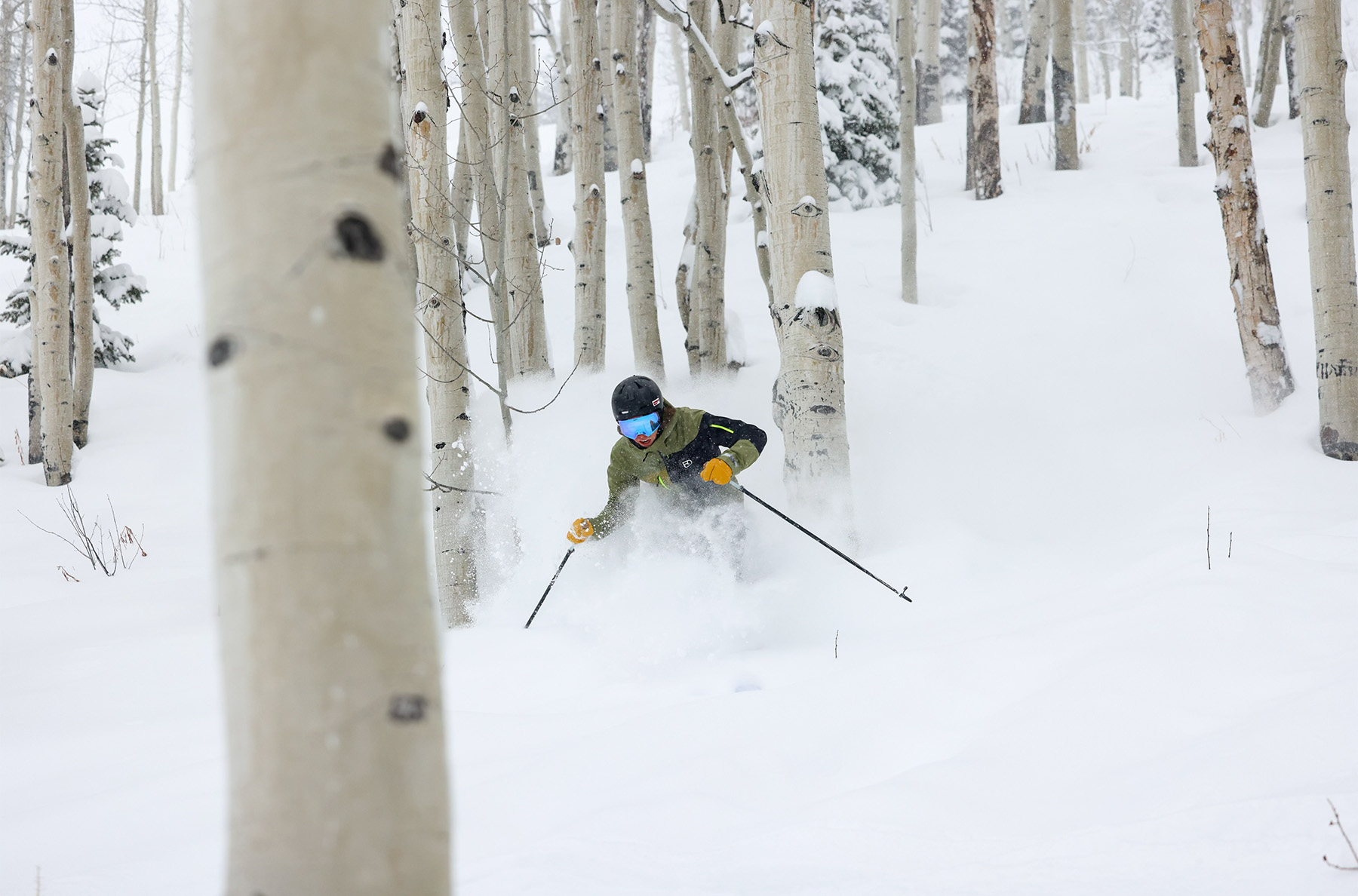
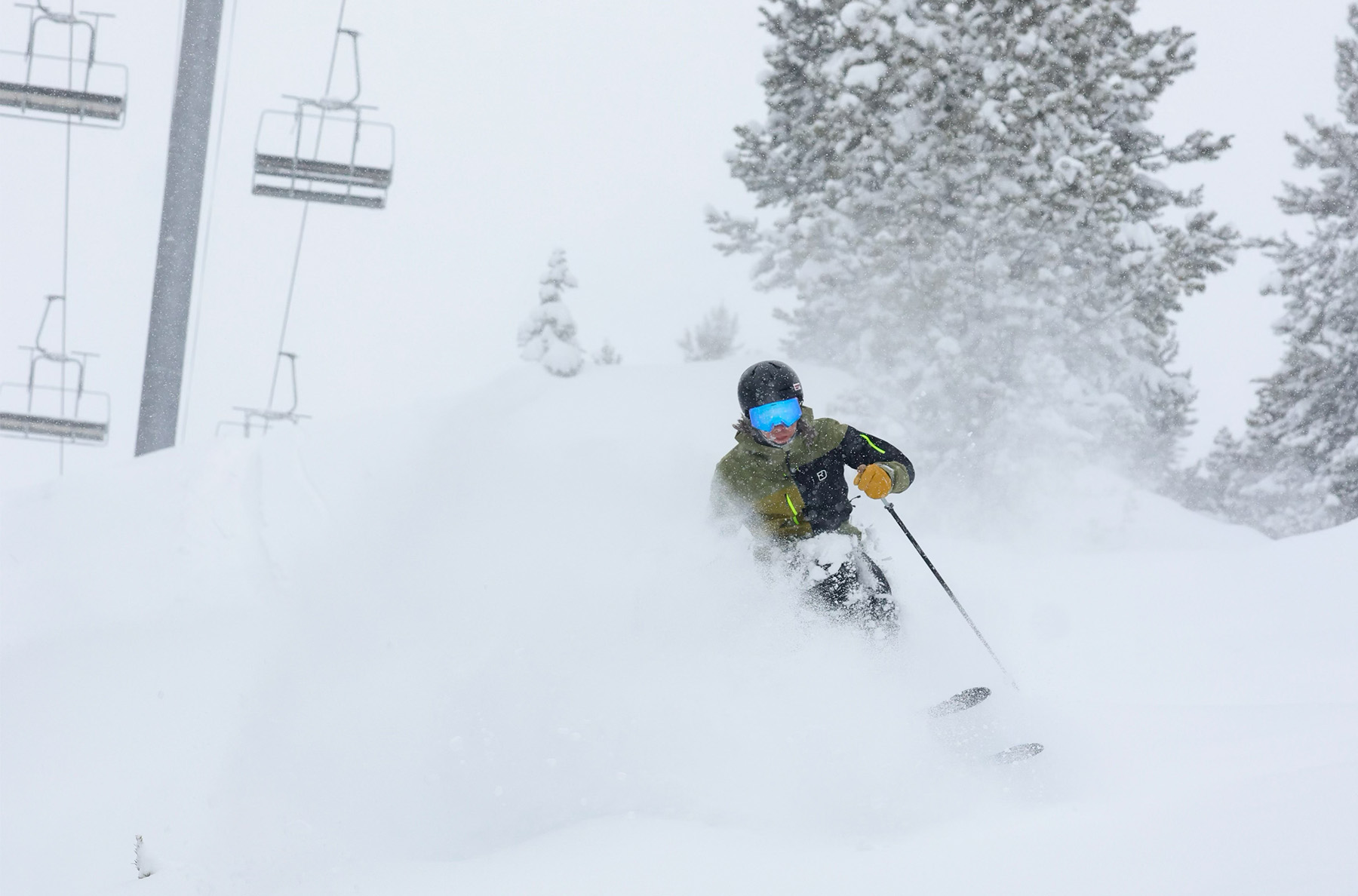
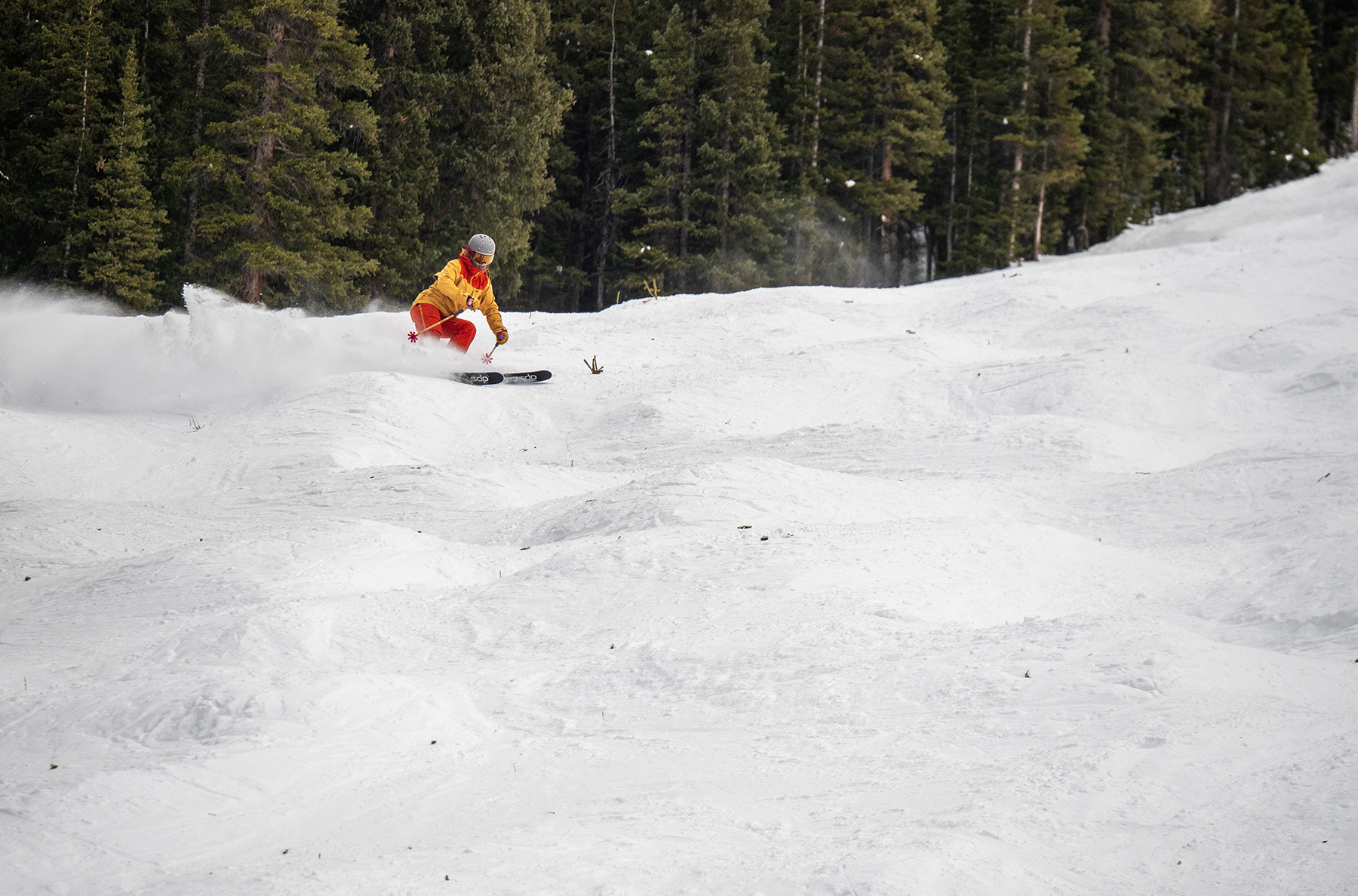
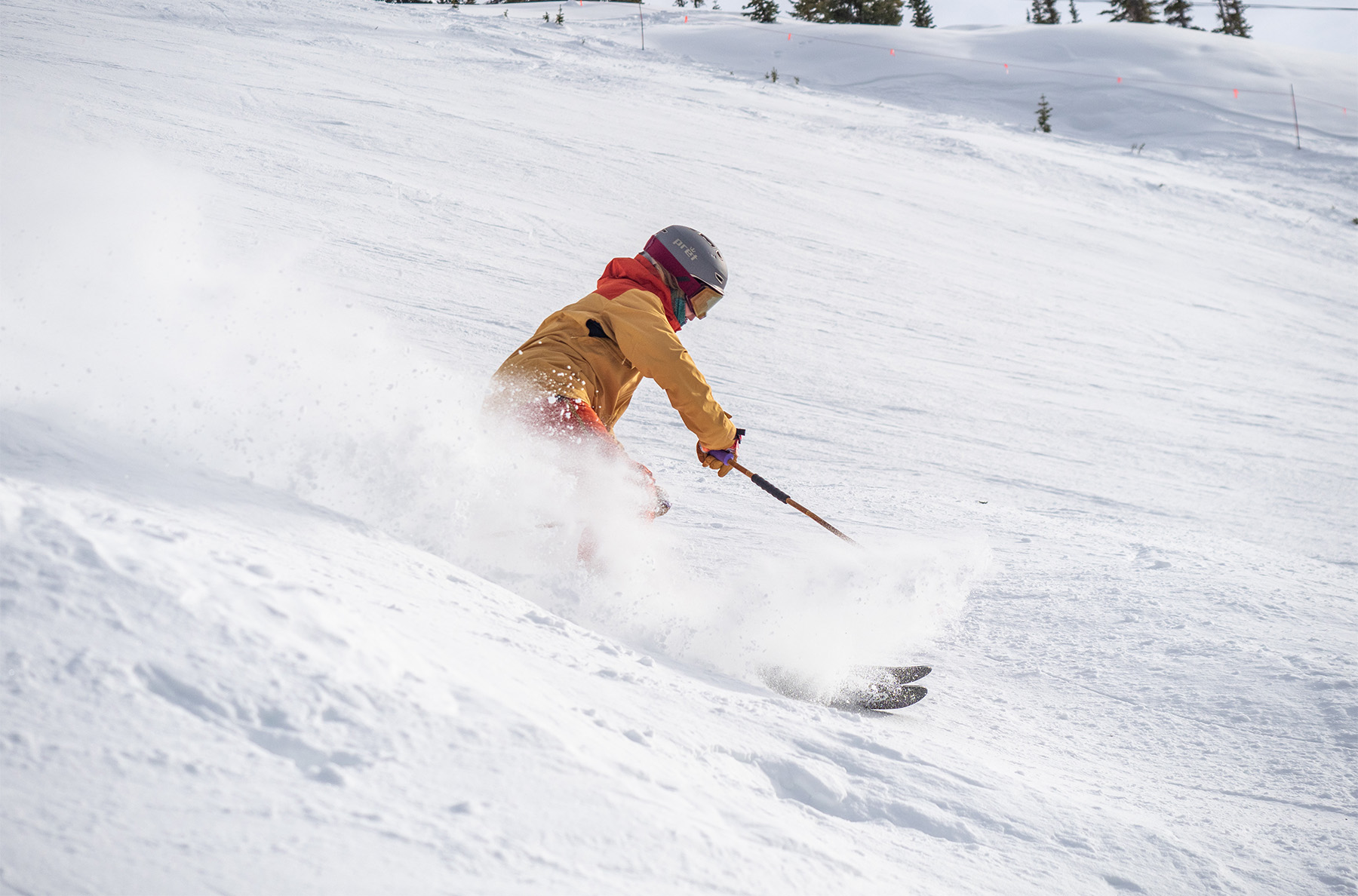
Got on these last Saturday, they were fun but I don’t think the construction matches the intended purpose/turn radius. Light and nimble at slower speeds but I didn’t feel comfortable letting them run, the 112 felt more cohesive to me (probably the 100 as well, but I didn’t ski those)
Review of the 112!!!?? I actually found both the 100 and 105s to be redundant. The 112 was more composed and carved just about the same given the radius. Like Steven said, they seemed more cohesive and are probably the better overall ski. Would love to review those! I’m not even sure why they made the 105
I’m one of the between lengths people I think, after skiing these at the summit. That said 184 is a touch longer than I’m used to. Is this a ski you can bump the mount point up a cm to keep the tips from feeling a little long?